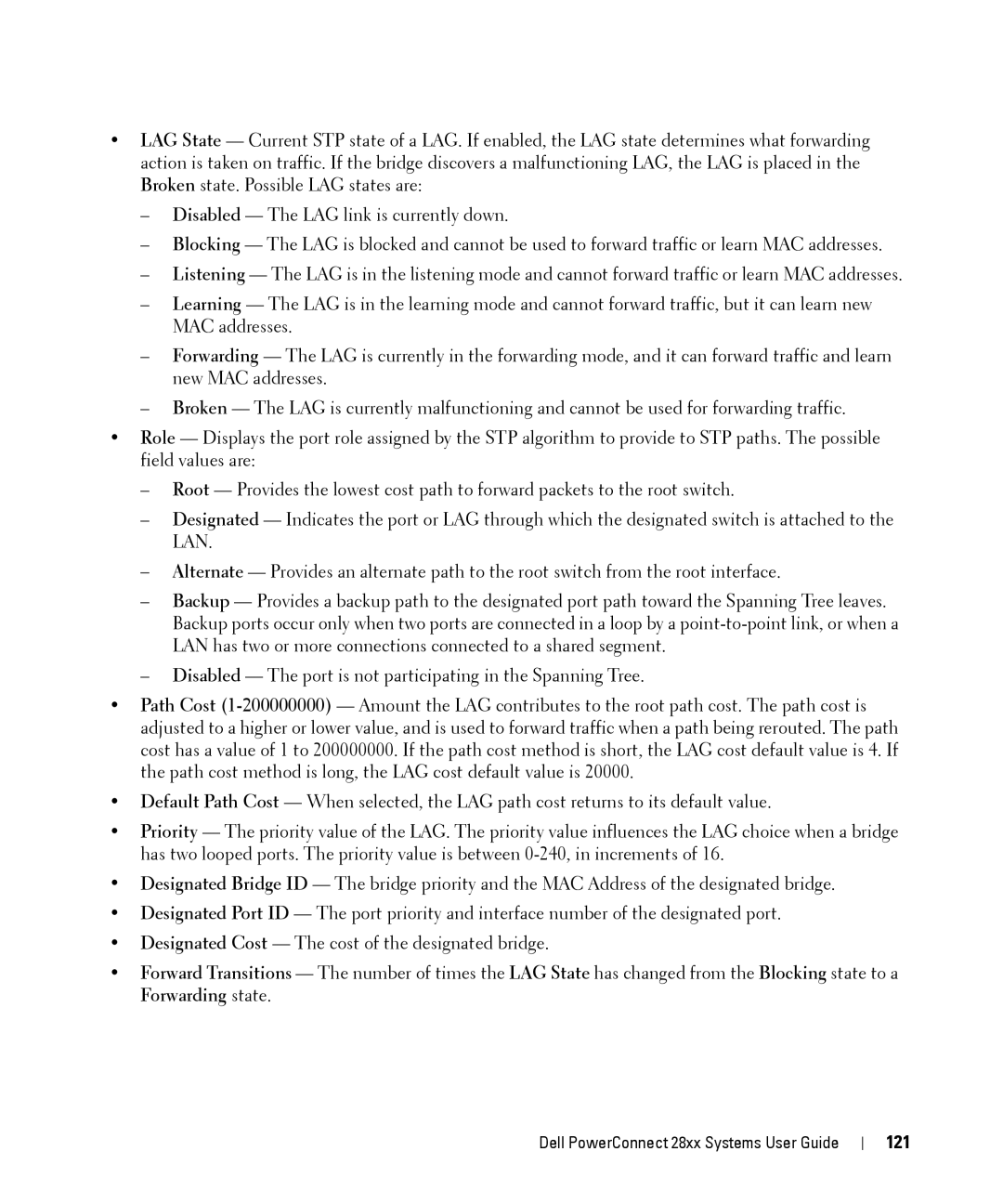•LAG State — Current STP state of a LAG. If enabled, the LAG state determines what forwarding action is taken on traffic. If the bridge discovers a malfunctioning LAG, the LAG is placed in the Broken state. Possible LAG states are:
–Disabled — The LAG link is currently down.
–Blocking — The LAG is blocked and cannot be used to forward traffic or learn MAC addresses.
–Listening — The LAG is in the listening mode and cannot forward traffic or learn MAC addresses.
–Learning — The LAG is in the learning mode and cannot forward traffic, but it can learn new MAC addresses.
–Forwarding — The LAG is currently in the forwarding mode, and it can forward traffic and learn new MAC addresses.
–Broken — The LAG is currently malfunctioning and cannot be used for forwarding traffic.
•Role — Displays the port role assigned by the STP algorithm to provide to STP paths. The possible field values are:
–Root — Provides the lowest cost path to forward packets to the root switch.
–Designated — Indicates the port or LAG through which the designated switch is attached to the LAN.
–Alternate — Provides an alternate path to the root switch from the root interface.
–Backup — Provides a backup path to the designated port path toward the Spanning Tree leaves. Backup ports occur only when two ports are connected in a loop by a
–Disabled — The port is not participating in the Spanning Tree.
•Path Cost
•Default Path Cost — When selected, the LAG path cost returns to its default value.
•Priority — The priority value of the LAG. The priority value influences the LAG choice when a bridge has two looped ports. The priority value is between
•Designated Bridge ID — The bridge priority and the MAC Address of the designated bridge.
•Designated Port ID — The port priority and interface number of the designated port.
•Designated Cost — The cost of the designated bridge.
•Forward Transitions — The number of times the LAG State has changed from the Blocking state to a Forwarding state.
